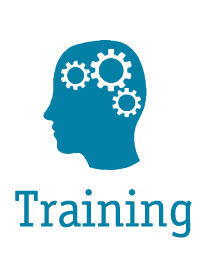ATC-71 PROJECT OVERVIEW
Title: Development of Simplified Guidance for Seismic Rehabilitation of Soft-Story Wood-Frame Buildings
Project Status: Completed May 2012
Client: Federal Emergency Management Agency (FEMA)
Related Projects and Reports: The ATC-71 Projecthas produced a three-part report on the NEHRP Workshop on Meeting the Challenges of Existing Buildings
PROJECT SUMMARY
Multi-unit wood-frame buildings with a weak first story represent a significant risk in highly seismic regions of the United States because of their high potential for collapse. This collapse potential is due primarily to their soft or weak first-story walls, which have often been weakened by large numbers of openings such as garages or store front windows. The ATC-71-1 project developed FEMA P-807 report, Seismic Evaluation and Retrofit of Multi-Unit Wood-Frame Buildings With Weak First Stories addressing seismic retrofitting of weak-story wood-frame buildings in seismically active regions of the United States, with a focus on multi-family, multi-story buildings with weak first stories, such as those damaged in the Marina District of San Francisco in the 1989 Loma Prieta earthquake, and apartment buildings with tuck-under parking, such as those damaged in Southern California in the 1994 Northridge earthquake. These seismic retrofitting guidelines are the first to focus solely on the weak first story and to provide just enough additional strength to protect the first floor from collapse but not so much as to drive earthquake forces into the upper stories, placing them at risk of collapse. They are also the first to take into account the strength provided by existing non-structural walls, making seismic retrofitting more affordable.
An electronic tool, similar to a graphic spreadsheet, was developed as part of the project to help apply the rules and perform the calculations described in the report. The Weak Story Tool and product support is available for here. Note that the report contains all the data, formulas, and procedural background needed to apply the method without using the Weak Story Tool.
PROJECT WORKSHOP OVERVIEW
Title: Planning and Conduct of an Earthquake Building Performance Rating System Workshop
Project Status: Completed May 2011
Client: Federal Emergency Management Agency (FEMA)
Related Projects and Reports: The need for this workshop was the highest ranked recommendation in the NEHRP Workshop on Meeting the Challenges of Existing Buildings, which was held in San Francisco in September 2007 (ATC-71 Project)
PROJECT SUMMARY
Rating systems are common for everything from restaurants and movies to energy efficiency of appliances and “green” buildings. But when it comes to earthquake risk, building occupants and owners lack a simple, common vocabulary for decision-making, such as a rating system. An “Earthquake Rating System for Building Performance” was identified as the highest-ranked need in earthquake hazard risk reduction in a variety of recent forums, including the National Earthquake Hazards Reduction Program (NEHRP) Workshop on Meeting the Challenges of Existing Buildings, which was conducted in September 2007 in San Francisco by the Applied Technology Council (ATC) and the Earthquake Engineering Research Institute, with funding from the Federal Emergency Agency (FEMA) and other National Earthquake Hazard Reduction Program (NEHRP) federal agencies.
The Earthquake Building Performance Rating System Workshop was conducted to gather input on potentially developing and implementing a new system for rating the earthquake performance of existing buildings. Prior to the Workshop, ATC organized a web-based Discussion Forum to enable Workshop participants and other interested stakeholders to openly discuss the relevance and usability of such a system. Both the Discussion Forum and the Workshop were intended to enable stakeholders to express their views on the desirability of developing and implementing an Earthquake Rating System for Building Performance. Topics addressed at the Workshop included (1) the extent to which such a rating system would encourage and promote building seismic evaluation and rehabilitation, (2) technical difficulties and related consistency issues, (3) advantages and disadvantages of such a system, (4) potential socio-economic impediments, and (5) other stakeholder concerns and needs. Following the Workshop, ATC issued the ATC-71-2 Workshop Proceedings, which summarize the presentations, discussions and findings of the Workshop, and provides a roadmap on the steps necessary to develop a rigorous but practical building rating system.
Workshop attendees included a broad range of stakeholders, including representatives from the insurance, financial, and real estate industries, social scientists, risk managers, building owners and regulators, earthquake engineering professionals, and key specialists involved in other building and construction rating programs.
FEMA P-50 REFERENCE MATERIALS
The FEMA P-50 report, Simplified Seismic Assessment of Detached, Single-Family, Wood-Frame Dwellings, uses the Simplified Seismic Assessment Form.
The FEMA P-50-1 report, Seismic Retrofit Guidelines for Detached, Single-Family, Wood-Frame Dwellings, is another available resource.
When completing the Simplified Seismic Assessment Form, available resources to determine site liquefaction potential/susceptibility are listed here.
To determine site landslide potential/susceptibility, available resources are listed here.




